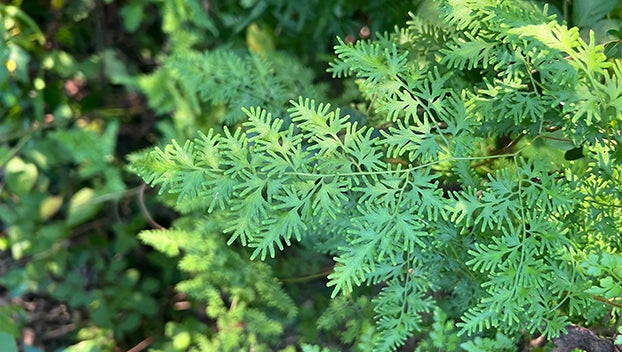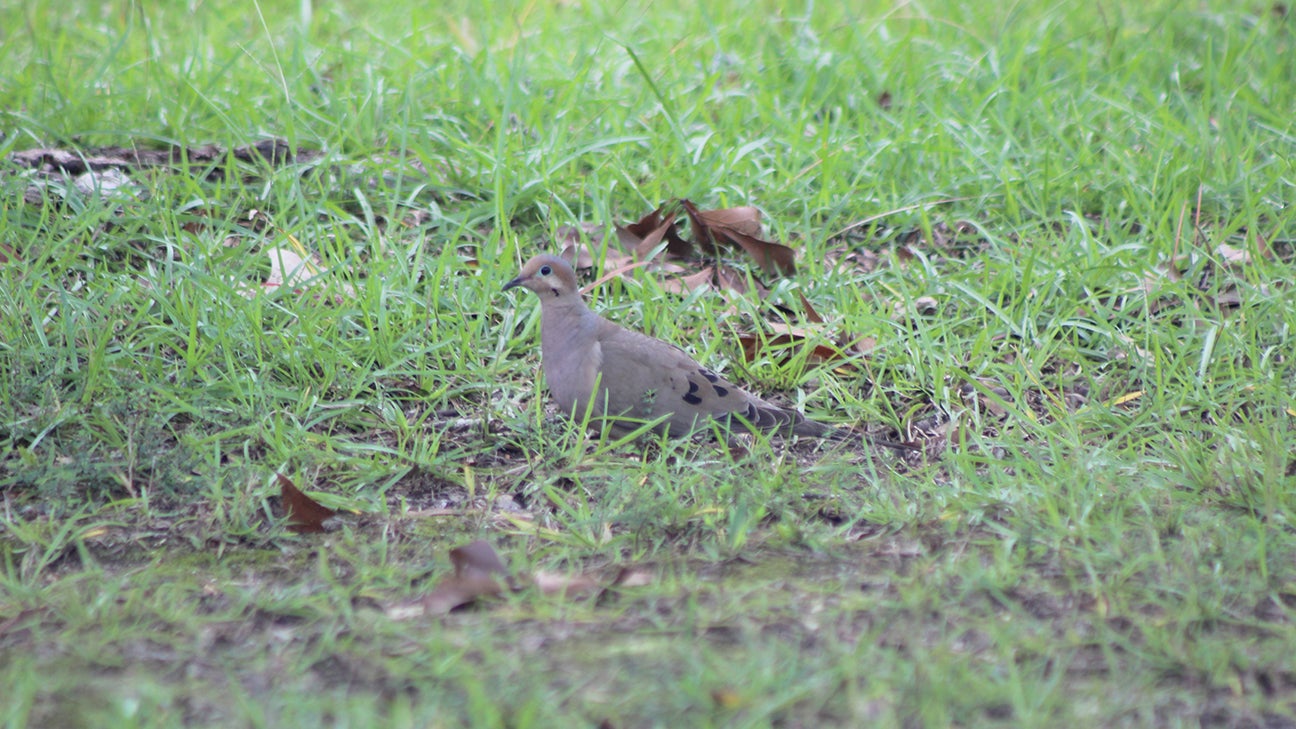Fighting Invasives: Herbicide needed to tackle climbing fern
Published 2:14 pm Monday, December 4, 2023

- Japanese Climbing Fern is a non-native invasive plant species which is a fire risk. It is important to manage the plant on your property to promote native plants and to prevent fires from spreading to the crown of trees. Herbicide is best in fighting this plant starting in late summer, when this picture was taken, to late Fall. (Hunter Cloud | The Daily Leader)
BROOKHAVEN — Christmas is around the corner and it might be a good idea to ask Santa Claus for herbicide to fight invasive plants. Late fall may not be the most popular time to manage habitat but there are still opportunities to get some work done.
Japanese Climbing Fern stuck out like a sore thumb in a sea of bahia and rye grass, neither of those plants are good for wildlife. Introduced in Florida as an ornamental plant in the 1930s, Japanese climbing ferns have expanded across the southeastern region. According to the University of Florida Center for Aquatic and Invasive Plants species, 39 percent of the US provides suitable conditions for the fern to grow. Once you find it on your property you may discover it pops up in other areas from upland forests to wetlands and fencerows.
A perennial vine type fern, it can reach up to 90 feet in length. Japanese climbing ferns grow in sun or shade, disturbed or undisturbed areas including floodplain forests, wetlands and pine flatwoods. Tiny spores from the fern are easily dispersed in the wind and will hitchhike on vehicles which is why mechanical methods of removal are not the best.
Climbing ferns can form a living wall eliminating the seedlings of natural vegetation. It can also be a major problem for pine plantations in the pine straw industry. Lincoln County Forester Steven Williams with the Mississippi Forest Commission said the fern will act as a ladder fuel.
“It is dangerous because it allows the fire to climb the tree and could catch the crown on fire. The vine acts as a fuel and when the ferns burn their spores spread,” Williams said. “The spores are bad about spreading fire. The whole thing floats when the vine burns up.”
Japanese Climbing Fern can ensnare animals in vines and competes for resources needed by native species. Williams said control measures on the plant are best employed in late summer and early fall when the fern is not producing spores. However you could potentially spray for the plant while the weather remains warm and the fern is still alive. Mississippi has not had a hard enough frost yet to shut all the plants down.
Herbicide applications of Glyphosate, Arsenal or 24D can inhibit the formation of amino acids in the plants which prevent the plant from growing and kill it over time. Williams said he recommends people get in contact with a herbicide manufacturer or private applicator to get a prescription. The prescription allows a landowner or manager to develop an application plan, the herbicide rate needed and what kind of herbicide is best.
Glyphosate and 24D are best for fighting invasive species in hardwood stands because they are typically not soil active nor do they attack hardwoods. Arsenal however is best used in a pine stand because it does not harm pine trees but can be deadly to hardwood trees such as Sweet Gums, which it was designed to kill. Arsenal, also called Imazapyr, is soil active.
Japanese Climbing Fern is a concern not only on private properties but also state managed properties such as Copiah Wildlife Management Area. WMA manager Med Palmer saw the ferns popup in burn units across the WMA but uses herbicide to control the ferns. Wild Turkey program coordinator Adam Butler pointed out the Japanese Climbing Fern on a visit to the WMA’s burn units in May.
Williams said the plant is on some of the 16th Section Land in Lincoln County and they work to spray the invasive species.
“Herbicide is the best way to get rid of it. Fire will knock it back but it is everywhere. I’ve used herbicides to fight it because it is easier,” Williams said. “It just depends on where the fern is in the stand on which herbicide I use. You can pull it up by the roots but herbicides just make it a lot easier to fight.”
Check back next week for a story on fighting another invasive plant.





